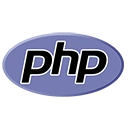Creating a PHP forum platform is a complex project that involves designing a database, building user authentication, and creating a user-friendly interface. In this guide, we'll walk through the essential steps to create a PHP forum platform:
1. Planning and Requirements
Before you start coding, define the features and requirements of your forum platform. Decide on user roles, such as administrators, moderators, and regular users. Determine the features like user registration, posting, and thread management.
2. Database Design
Create a database schema to store forum data. You'll need tables for users, threads, posts, categories, and more. Use SQL to design your database structure.
CREATE TABLE users (
id INT PRIMARY KEY,
username VARCHAR(255),
email VARCHAR(255),
password VARCHAR(255)
);
CREATE TABLE threads (
id INT PRIMARY KEY,
title VARCHAR(255),
content TEXT,
user_id INT,
created_at DATETIME
);
-- Define other tables like posts, categories, etc.
3. User Authentication
Implement user authentication for user registration and login. You can use PHP's
password_hash()password_verify() // Registration
$hashedPassword = password_hash($password, PASSWORD_DEFAULT);
// Login
if (password_verify($password, $storedPassword)) {
// User is authenticated
}
4. Forum Structure
Design the forum structure with categories, threads, and posts. Users should be able to create, edit, and delete threads and posts within relevant categories.
5. User Interface
Create a user-friendly interface using HTML, CSS, and JavaScript. Design the forum layout, user profiles, thread lists, and post forms. Ensure responsiveness for various devices.
6. Backend Development
Develop the backend using PHP to handle user actions like posting, editing, and deleting threads and posts. Implement server-side validation to prevent SQL injection and other security vulnerabilities.
7. Admin and Moderation Tools
Create admin and moderation tools for managing users, categories, and reported content. Admins and moderators should have the ability to delete posts, ban users, and manage forum categories.
8. Security and Validation
Implement security measures like input validation, output escaping, and user authorization. Protect against common web vulnerabilities like SQL injection, Cross-Site Scripting (XSS), and Cross-Site Request Forgery (CSRF).
9. Testing and Bug Fixing
Thoroughly test your forum platform to identify and fix bugs and usability issues. Test across multiple browsers and devices to ensure a seamless user experience.
10. Deployment
Once you've tested and refined your forum platform, deploy it to a web server and make it accessible to users. Ensure that your server environment is secure and optimized for performance.
Conclusion
Creating a PHP forum platform is a challenging but rewarding project. It involves database design, user authentication, frontend development, and backend logic. With careful planning and attention to security, you can create a vibrant online community for users to engage and interact.

